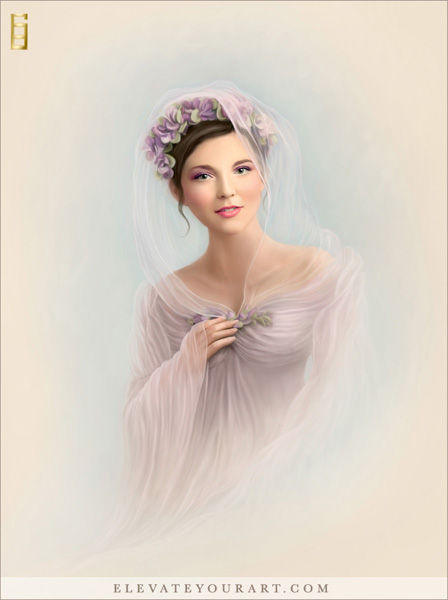
by successfulbob | painting study, photography, photography competition, photography creativity, tuesday painterly photo art
Tuesday Painterly Art
Michelle Parsley M.Photog, M. Artist, Cr., CPP
I had the pleasure of taking a Michelle Parsley full day Pre-Con class at Imaging USA this year. I was extremely impressed with her attention to detail and classroom style. If you ever get the opportunity to learn from Michelle, I highly recommend it. BTW, you can also work with Michelle online. Check out links to her education at the bottom of the post.
Hear now from Michelle below as she talks about her work and producing images for PPA’s International Photographic Competition. All Images © Michelle Parsley 2019 All Rights Reserved
 “For most of my client work, I create “pretty pictures” in either digital or traditional mediums. An
“For most of my client work, I create “pretty pictures” in either digital or traditional mediums. An
example of client work would be “A Study in Pastels”.
But when I’m given free rein to do anything I want — I love to tell stories with my images. I
believe storytelling is one of my artistic strengths and I find it especially satisfying when others
can easily see the story. I often employ this tactic in my competition images.
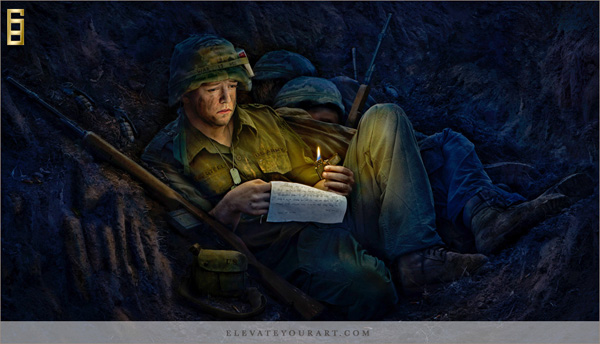 Sometimes, I am compelled to tell a serious story — like in the image “Dear John”. Anyone
Sometimes, I am compelled to tell a serious story — like in the image “Dear John”. Anyone
that has served in our armed forces can easily identify with this image.
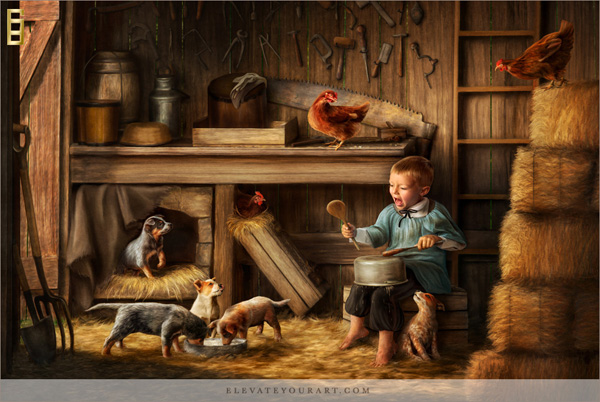 More often than not, I tell humorous stories like “Dinner and a Show”. What little one hasn’t
More often than not, I tell humorous stories like “Dinner and a Show”. What little one hasn’t
used a pot for a drum and sang at the top of their lungs? By giving him an audience of
puppies in a barn, it accurately reflects the realities of life with boys on the farm. (No — this
child is not one of my boys)
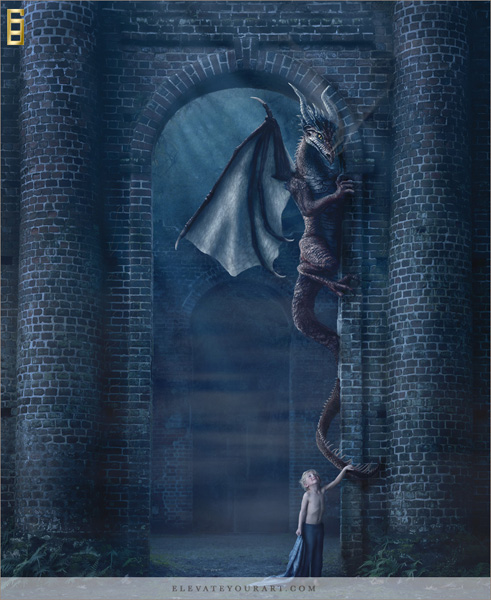 In “Who’s Training Whom?” You can really get a glimpse into my imagination. I had the
In “Who’s Training Whom?” You can really get a glimpse into my imagination. I had the
pleasure of visiting the old Sheldon Church ruins in the Charleston, SC area with Tiffany Briley
of Charleston Photography Tours a few years back. I couldn’t help but let my imagination run
wild! What a giggle it was to have Julia Kelleher photograph her son based on my directions,
and create this fanciful image of a friendly dragon. The dragon was created by photographing
a plastic toy from several angles and frankensteining it together in Photoshop.
Continued next week!
Behind every artist there is a story and Michelle’s story began as a child when she would draw or paint with anything she could find (which got her in trouble on more than one occasion!). She has been creating hand drawn and hand
painted art for clients for nearly 20 years. Michelle is mostly self-taught in all the mediums she uses to express
her creativity. By combining her love of both digital and organic mediums, Michelle is uniquely equipped to both create and teach art. Michelle earned her Certified Professional Photographer (CPP) designation from Professional
Photographers of America (PPA) in 2009 which led her to enter her first International
Photographic Competition in 2010.
She has since earned the Master of Photography 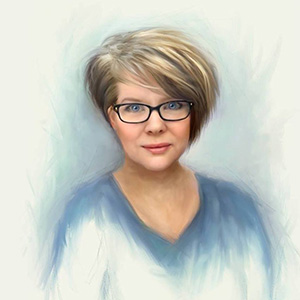
and Master Artist degrees in 2014, diamond artist of the year in 2012, the
Imaging Excellence Award in 2015, Photographic Craftsman in 2017, Double diamond and the Imaging Excellence Bar in 2018.
When Michelle is not teaching, photographing, or painting, she enjoys a great cup of coffee, dark chocolate, and working on the family farm in rural Tennessee where she lives with her husband of over 25 years, their four children, four dogs, and an ever changing host of farm animals.
The class I took from Michelle – Photoshop Clone Painting
More Clone Painting Classes – All Clone Painting Classes
General Teaching site – Elevate Your Art

by successfulbob | Guest Post, Marketing Monday, photography, photography education, photography marketing
Portrait Pricing Guidelines with Steve Bedell – Part Four
Marketing Monday Guest Post
Here is Steve’s continuation from part 1 and part 2 and part 3 portrait pricing
“Six: Wall portrait bonus
We all know the money is in the wall portraits and wall groupings. So from our initial contact right through the sales session that’s what we should be striving for. To drive that point home, I offer a discounted price of about 30% off on gift prints when they purchase a portrait 20 inches or larger. (Note: The discounted price is the price I feel I should sell that product for. If they don’t have a wall portrait I am just more profitable on the smaller prints)
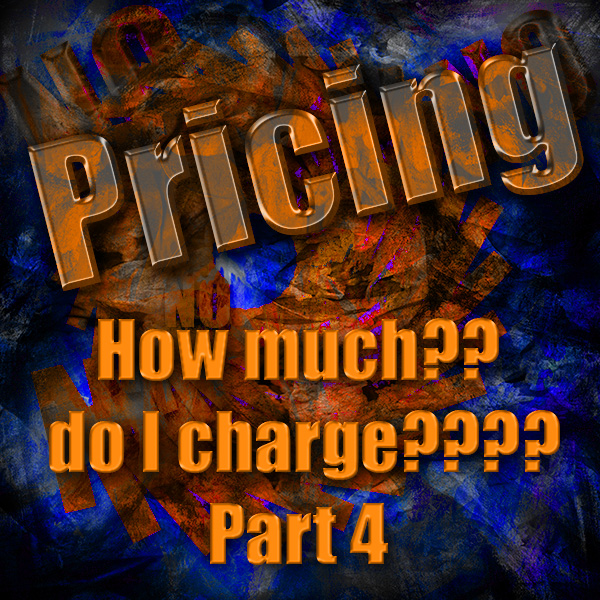
SEVEN: Albums
I know many photographers like albums. I am not a huge fan. You either have to take the time to do the layout or pay someone to do it (my choice). I know you can get big numbers from them but make sure you cover all your bases, including time, when deciding the pricing.
I prefer Album boxes. Make a few 5×7’s for peanuts, slide into 8×10 mats and put into the box. Pretty simple plus if you make an error in any image you just change out one print.
EIGHT: ALWAYS list most expensive product first
I’m firm on this one; this is pretty much an unbreakable rule. People read from the top down, left to right. Start out with that 40×60 for half a million bucks (you wish) and by the time they get down to that 16×20 for $800 it’s going to look pretty inexpensive. The mind works this way, at first they think ‘Oh my God, I can’t afford this’ to ‘Well, that’s more in my budget’. Start small to large and it’s an uphill battle.
It works the same way with your good/better/best pricing, always list the most expensive product first or right to left.
NINE: Session fees
OK, there’s a lot of wiggle room in this one. I know some VERY successful (Bradford) photographers who have no session fees. I know others who have very high session fees. Which is better for you?
Well, Bradford has a brilliant system where he has one background and I’d guess not much changing in the lighting. In my semi-retirement, I am doing everything from the consultation to the shoot to print delivery on location. That’s a significant chunk of time to be doing everything for free so I have a session fee of $300. That works for me, you may be different.
But there is another good reason to have that session fee. You don’t want to discount your products but the session fee can be used as a bargaining chip. You can do 50% off session fee promotions, free sessions for returning/good clients, etc. and not be hurting your sales average.
TEN: Payments
When we tally up the order we ask ‘How would you like to pay for that’. Most people either give you a check or a credit card and that’s the end of it. If they ask if they have to pay it all up front, we tell them they can pay 50% now, the balance when they pick up. 90% pay in full right off. I don’t offer payment plans, that’s what credit cards are for.
ELEVEN: Minimum orders
I’ve never had minimum orders. Why? I feel like they act as a barrier. Job one is to get people in front of your camera. People may not like the idea of having to spend a certain amount of money before even seeing the end result.
Have I ever been burned on this? Of course, but not that often. We are very comfortable with our photography and sales skills so we’ll put that risk on us.
TWELVE: Wall Groupings
You sell wall groupings by showing wall groupings. That is one of the big benefits of Proselect, Swift Galleries and others. Most can even let you show them on their own walls. If you go to the house during or before the shoot, you can take pics of the walls ahead of time. You can also ask them to do, some will, some won’t.
I price my wall groupings at a slight discount to buying the images individually. Why? I’d rather sell 3-5 images than just one. Most of the wall groupings I sell are Gallery Wraps.
Big tip: Use the templates from your lab. ACI has over 25 different templates and when you order them as a grouping the price is about 15% less than if you ordered them individually. Design your wall groupings ahead of time using these templates and you’ll be even more profitable.
THIRTEEN: Don’t use dollar signs or odd number pricing.
If you’re a low end studio, go ahead and price your work using dollar signs and odd number pricing. Example: 8×10 for $34.95. If you are trying to convey that you are a luxury product, use 20×24 for 1100. An Hermes bag is not priced at $4997, it is priced at 5000.
”
Steve Bedell has been a professional photographer for over 35 years. He has done weddings, portrait and commercial work but now restricts his business to portraits only.
Steve holds the Master of Photography and Photographic Craftsman degrees from the Professional Photographers of America and is a PPA Approved Print Juror.
commercial work but now restricts his business to portraits only.
Steve holds the Master of Photography and Photographic Craftsman degrees from the Professional Photographers of America and is a PPA Approved Print Juror.
He has been named the New Hampshire Photographer of the Year a record 8 times and in 2011 was awarded the New England Photographer of the Year title. His specialty is natural light portraiture.
He has written hundreds of articles for photo publications, taught classes and workshops nationwide and produced several lighting DVDs. His private newsletter, EPhoto, reaches over 2000 photographers. Steve was a regular contributor to Shutterbug magazine.
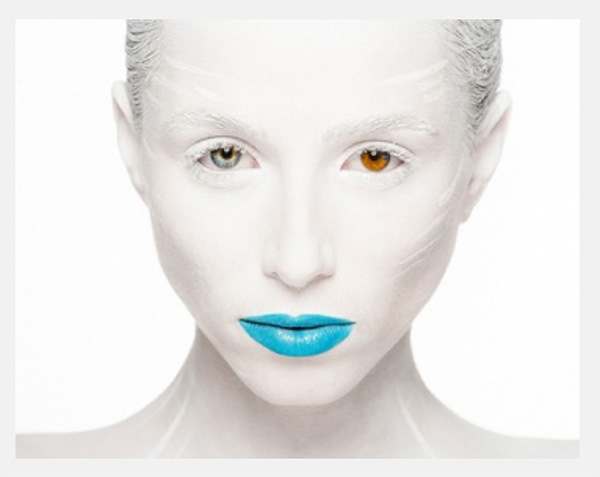
by successfulbob | architectural photography, imaging competition, inspiration, photography, photography competition, photography creativity
Imaging USA Part Three
Here’s my final wrap up from Imaging USA in Atlanta.
As mentioned, but worth saying so again, networking and speaking with people is a great way to continue your education. And I don’t think you can put a price on that.
Accolades at IUSA
I mentioned some ASP accolades that were earned this year and I also want to recognize the Grand Imaging Awards. This is a way for people to be recognized to push and further their photography skills. While the GIA’s are the pinnacle you don’t wait until you think you have the imagery to win there, you get there by getting into it to learn. These results come from International Photographic Competition (IPC) which is a contest with yourself to become better than you were the previous year and to learn, sometimes through hard knocks, what you might do to better your skills. In my opinion, IPC has been probably the single most important vehicle in helping me become the image creator I am today. Not to mention that it generates a reason to send out a press release, not only when you are successful, but even just being a participant! (you know me and press releases for promoting my business!)
I was a Silver Medalist and Bronze Medalist by going four for four in the two of the image cases I submitted. Proud of those results indeed. I also managed to earn a Third Place GIA Award in the Non-Event Album category with architectural images made from a personal project captured at the Phoenix Art Museum.
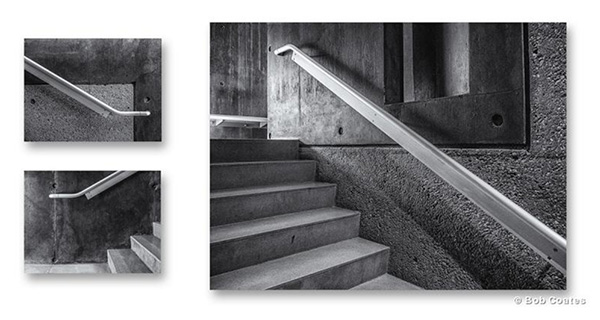 One of the Spreads from my Third Place album
One of the Spreads from my Third Place album
Additional AZPPA success
A big salute to the other big award winners from the Arizona Professional Photographers Association.
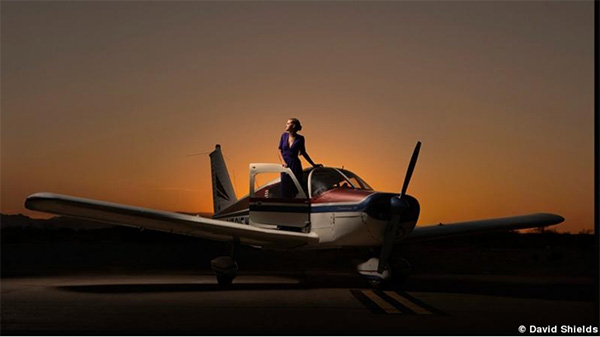 David Shields, CPP, getting third place for his image “Oh the Places She Will Go” in the High School Senior Portrait category. Image © Dave Shields 2019 All Rights Reserved
David Shields, CPP, getting third place for his image “Oh the Places She Will Go” in the High School Senior Portrait category. Image © Dave Shields 2019 All Rights Reserved
 This is by Heidi Mixon in the Top Ten in the Portrait category and will be one of the images representing the United States in the Photographic World Cup!!! Image © Heidi Mixon 2019 All Rights Reserved
This is by Heidi Mixon in the Top Ten in the Portrait category and will be one of the images representing the United States in the Photographic World Cup!!! Image © Heidi Mixon 2019 All Rights Reserved
Both Heidi and Dave are part of Studio Three Images in Phoenix.
There were other AZPPA peeps that did well too but these are the highlights. It has been so amazing to watch those that enter competition accelerate their photographic voices so quickly. AZPPA is having their image competition this weekend. Time to get in! If you are looking for feedback on your work with PPA Approved Jurors and Jurors in Training you can get in to get scores too. Awards are for AZPPA members only. AZPPA Convention
Yours in Creative Photography, Bob
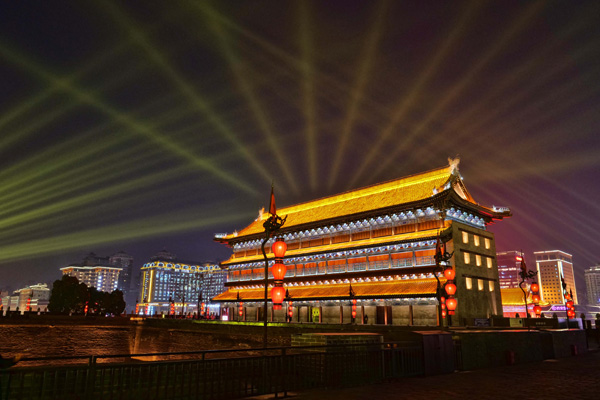
by successfulbob | cityscape photography, Guest Post, landscape photography, Lumix G85, travel photography
Travel in China – Xi’an
Guest Post – Ken MacAdams
Ken has been traveling in China and settling in for long periods. His last visit was for quite a while in Xi’an. Enjoy his images and commentary.
“I’ve been in Xi’an for nearly two months now. Living like a local has great rewards. In my apartment complex, I play on the jungle gym with the little kids (who come running and squealing to me – babbling away in Chinese that I can’t understand) when they spot me walking by! I go to the local street market to purchase my fruits and vegetables with my neighbors. I ride the bus with university students, businessmen and secretaries going about their daily lives. And nothing is more rewarding than the toothless old granny who bursts into a smile when I say “Neho” (hello) as we pass on the street!
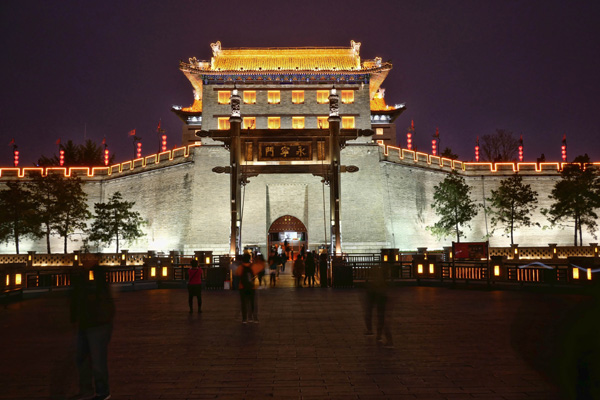 The drawbridge over the moat with the archers tower behind.
The drawbridge over the moat with the archers tower behind.
This wall is the only ancient city wall completely intact in China. This is one of the archers towers over the drawbridge. Besides longbows, they had crossbows capable of reaching 1/4 of a mile. It would have been deadly to try to gain entrance uninvited!
This is one of the archers towers over the drawbridge. Besides longbows, they had crossbows capable of reaching 1/4 of a mile. It would have been deadly to try to gain entrance uninvited!
The lights at nighttime are magic!
As a tall Westerner, I stand out, but I find the Chinese people very warm and welcoming, even if there is a huge language barrier! The “translator” app on my phone gets a daily workout, but many of the younger folks have studied some English, and although bashful about using it, they’ll often come to my rescue!
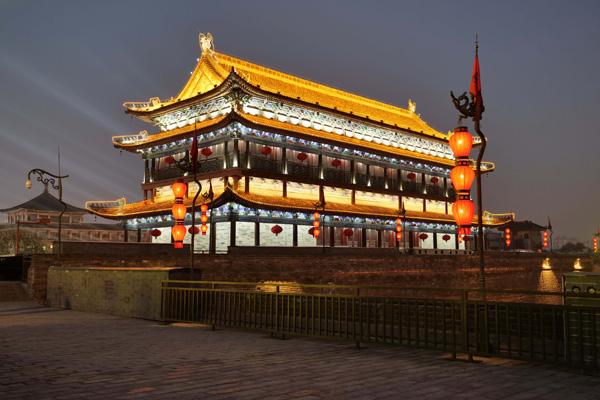 This is a temple on the ancient wall.
This is a temple on the ancient wall.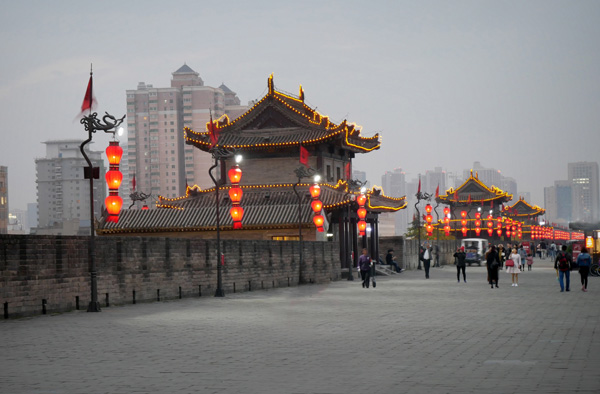 Guard towers stationed along the top of the wall. Note the smog in the atmosphere.
Guard towers stationed along the top of the wall. Note the smog in the atmosphere.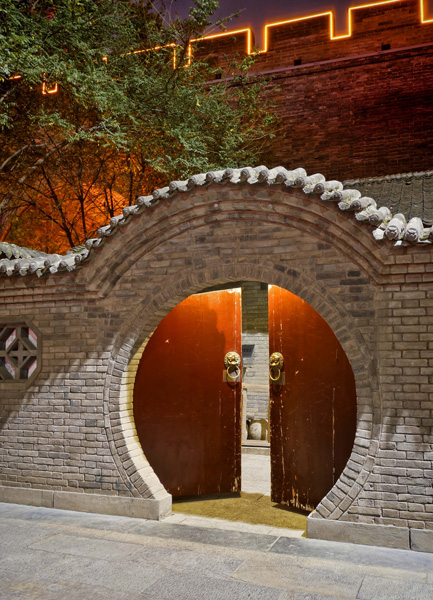 Entrance way along the wall.
Entrance way along the wall. Although I concentrate most of my time in Xian, I travel out to photograph in provinces to the east and west. China continues to expand routes serviced by their high speed “bullet” train, the futuristic aerodynamic trains that travels at 200 MPH. Travel between major cities is quick, quiet, and competitive with air travel. To me, traveling on the train, is just part of “living like a local.”
More from Ken and Xi’an, China Next Friday!
Ken has always loved to travel, so when he made a common connection with the fact that either a long day pounding the streets of some foreign city, or shooting the last dance at a wedding, a good part of his physical

weariness came from lugging around his big heavy DSLR. That’s when he started looking at alternatives – and ended up selecting Panasonic Lumix Micro Four Thirds gear.
Ken is rarely without a camera, and the next great photo travel experience – whether local or abroad – is always in the back of his mind! A longtime resident of the Four Corners, and when he’s not out on the road, he enjoys some of the great outdoor opportunities found there – mountain biking, hiking, and Jeeping.
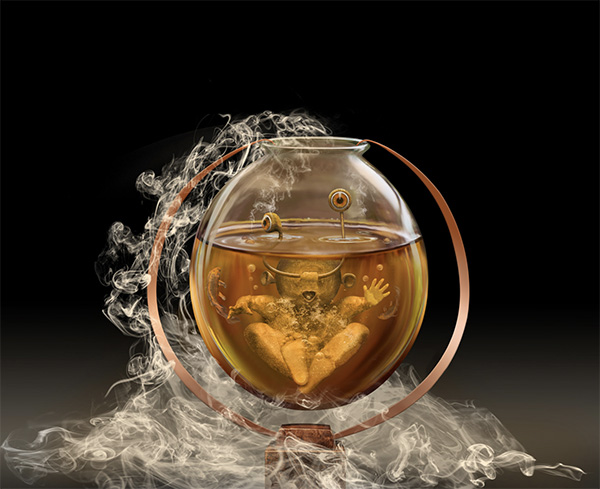
by successfulbob | fine art photography, inspiration, photography, photography education
Imaging USA 2019 – Atlanta, GA Part Two
Find Part 1 here
I mentioned networking in my last post as a reason for attending Professional Photographers of America’s Imaging USA. Let me add that it is a great time to recognize the achievements of your fellow photographers.
American Society of Photographers – Fellowship
One of these events is the American Society of Photographers Banquet. There is more networking, of course, but so much more. ASP has worked very hard over the past couple years to become more inclusive and make the awards banquet something to really look forward to. There were two new ASP Fellows Ella Carlson and Kristi Elias. While their images and papers have not been posted as yet on the ASP site you can get an idea by checking out other ASP Fellow papers (ASP Fellows)
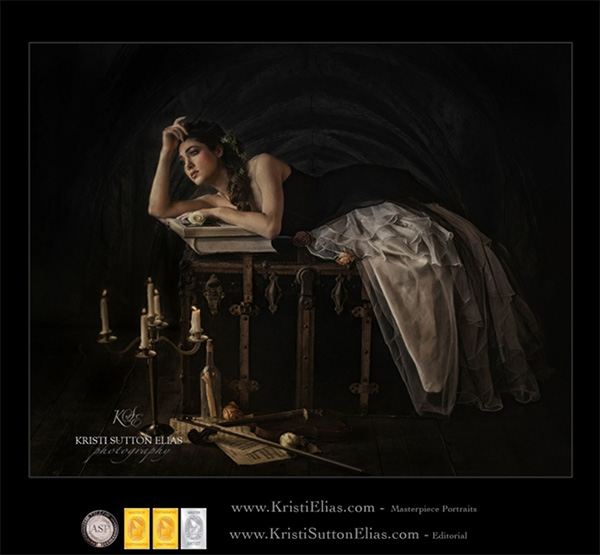 One of twenty-five images submitted by Kristi for the Fellowship. See the rest of her images and read her paper for more of her fascinating photographic journey! Image © Kristi Elias – 2019 All Rights Reserved.
One of twenty-five images submitted by Kristi for the Fellowship. See the rest of her images and read her paper for more of her fascinating photographic journey! Image © Kristi Elias – 2019 All Rights Reserved.
 Here’s a link into Ella’s exquisite world of Aliens used in attaining her Fellowship.
Here’s a link into Ella’s exquisite world of Aliens used in attaining her Fellowship.
Image © Ella Carlson 2019 All Rights Reserved.
Eligibility to apply for the ASP Fellowship requires that an individual hold at least one of the PPA Master degrees, be a current ASP member in good standing, AND have acquired 15 additional print merits AFTER receiving their degree during contiguous years of ASP membership.
The applicant must complete a minimum of three consecutive years membership in ASP prior to application. A thesis/personal paper of at least 2000 words providing insight into their photographic or artistic journey, influences, philosophies and passion that make them the photographer or artist they are today.
The applicant must also submit a portfolio of 25 exquisite images characteristic of his or her finest work that is a visual representation of their written paper.
Recipients of the Fellowship must maintain membership in ASP and PPA.
American Society of Photographers – Educational Associate
Steve Clark earned his Education Associate. (read Steve’s paper here) The ASP Educational Associate is conferred on those special individuals who actively participate and promote the ideals and philosophies of the organization beyond the initial recognition given with their acceptance into the Society. It is available to all active, life, honorary life and international members of the Society that hold a PPA Craftsman degree.
The ASP Educational Associate requires that an individual hold the PPA Photographic Craftsman degree, be a current ASP member in good standing, AND have acquired 30 additional speaking, teaching, or writing merits AFTER receiving their degree during contiguous years of ASP membership.
The applicant must write a paper of at least 4000 words of individual research and thought that demonstrates the applicant’s mastery of the field and supports a position for a new idea, development or trend. (read other ASP Associate papers here)
Hmmm. This post has gone on for a while guess I’ll be adding a part three to these Imaging USA posts.
Yours in creative Photography, Bob
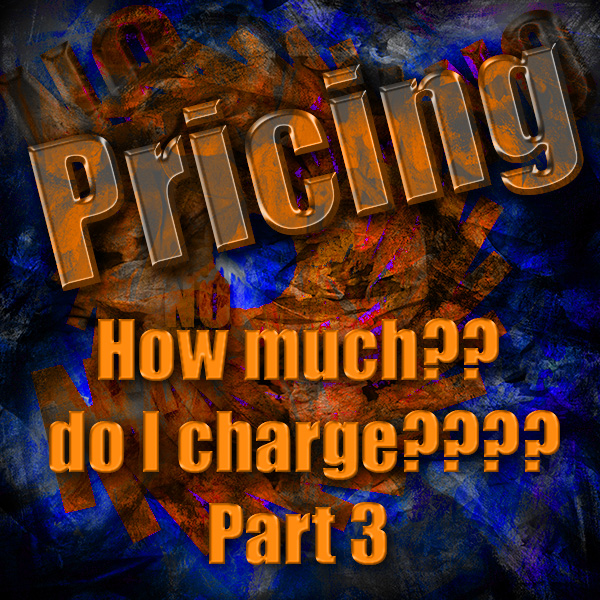
by successfulbob | Guest Post, Marketing Monday, photography, success education
Portrait Pricing Guidelines with Steve Bedell – Part Three
Steve Bedell shares his thoughts on Portrait Pricing.
“As I reviewed my part 1 and part 2 of this pricing topic here on Successful-Photographer I was astounded that having so much knowledge I wasn’t worth about 27 million dollars! In any case, there was great response to the article about pricing in general and how to determine where you should be in it so now we continue with specifics.
Please note that much of this is my opinion but a great deal of it is what I’ve learned by PSTM (people smarter than me) so I stray from these guidelines at your own risk. With that in mind, let’s get going. Again, my mind kinda wanders all over the place so things may not be in proper order, but put up with me, the info is the same.
 ONE: Should I have a printed price list?
OK, I’m not kidding here. I see in online groups people asking for all kinds of feedback on their price list. NOT the pricing, but how the price list looks. They’ll discuss fonts, layout, etc. They’ll look nice and pretty but does it really matter? We’ll come back to that but question two is related so let’s get to that right now.
ONE: Should I have a printed price list?
OK, I’m not kidding here. I see in online groups people asking for all kinds of feedback on their price list. NOT the pricing, but how the price list looks. They’ll discuss fonts, layout, etc. They’ll look nice and pretty but does it really matter? We’ll come back to that but question two is related so let’s get to that right now.
TWO: Should I post prices online?
This one is MUCH easier to answer: NO!
Why? Because if someone goes online looking for a photographer and does a Google search and they see your 8×10 (the standard that they all know) is $195 and Joe’sSuckyPhotos.com is $29, which one will they choose? They’ll most likely choose Joe because they are just looking at prices and when you compare pricing in a vacuum you are looking at a commodity. If they visit your site and instead see your special booklet that tells them ‘5 Tips for a Great Family Portrait’ and lots of testimonials you have already set yourself apart from the bottom feeders.
OK, so now that we have a little background, should you have a printed price list?
I say yes, so it doesn’t look like you’re just pulling prices out of the air. But do you need to print up hundreds and send/email them to everyone who contacts you?
No.
You only really need one, and that’s for you to use in the sales room. Don’t believe me? Bradford Rowley uses a SLIDE of the price list during the sales session and only leaves it there for as short as possible. You want people focused on picking the best pose and the proper size portrait, you do NOT want them sitting there with their nose in a price list.
A little caveat here. I am talking about a PRICE LIST, not a Product Guide. A product guide will show sample of the products and a starting price or price range. One of the best I’ve seen is by Megan Dipiero. We featured Megan a little while ago, you can see her guide HYPERLINK “http://files.megandipiero.com/product-guide/?page=1” \t “_blank” here.
THREE: When should I show the price list?
There are different schools of thought on this.
Some say don’t ever show it, just let them come to the order appointment, write up what they want, then tell them the price.
Others tell them pricing during the consultation when the session is booked.
I’ve used both methods, they both work. I prefer the up front method, it makes me and them more comfortable at the sales session, less like I’m holding the images hostage. Do what you’re comfortable with and what works for you. Previous to a consultation, always use a price range instead of exact pricing, like ‘Our gift prints start at $95 and wall collections begin at $1800’ or something along those lines. They’ll have a better idea of why you charge what you do during the consultation.
FOUR: Good/Better/Best pricing
This model has been around since the dinosaurs. Why? Because it works! I have my ‘paper prints at level 1, canvas prints at 2, and Gallery Wraps and metals at level 3. Decide size first, then finish. This gives you an opportunity to make more income on the same sized print. As an example, my 16×20’s are $600/$750/$925. This may seem very low to some and high to others. Also, don’t just call them finish one, two, three. Use names like The Masters, The Venetian, etc and include a descriptive paragraph like ‘enhanced by our artist and bonded to natural fiber canvas’.
FIVE: Should I have a contract?
I read many posts where photographers sound like wannabe lawyers. I like to concentrate on the experience so introducing a contract into the mix just doesn’t work for me. You should have policies for payment but in 40 years of doing this I’ve had no need for a contract. Weddings, yes, portraits, no. It’s up to you.”
More to come as Steve brings the rest of this home in Part 4 on Successful-Photographer.
Steve Bedell has been a professional photographer for over 35 years. He has done weddings, portrait and commercial work but now restricts his business to portraits only.
Steve holds the Master of Photography and Photographic Craftsman degrees from the Professional Photographers of America and is a PPA Approved Print Juror.
commercial work but now restricts his business to portraits only.
Steve holds the Master of Photography and Photographic Craftsman degrees from the Professional Photographers of America and is a PPA Approved Print Juror.
He has been named the New Hampshire Photographer of the Year a record 8 times and in 2011 was awarded the New England Photographer of the Year title. His specialty is natural light portraiture.
He has written hundreds of articles for photo publications, taught classes and workshops nationwide and produced several lighting DVDs. His private newsletter, EPhoto, reaches over 2000 photographers. Steve was a regular contributor to Shutterbug magazine.

 “For most of my client work, I create “pretty pictures” in either digital or traditional mediums. An
“For most of my client work, I create “pretty pictures” in either digital or traditional mediums. An Sometimes, I am compelled to tell a serious story — like in the image “Dear John”. Anyone
Sometimes, I am compelled to tell a serious story — like in the image “Dear John”. Anyone More often than not, I tell humorous stories like “Dinner and a Show”. What little one hasn’t
More often than not, I tell humorous stories like “Dinner and a Show”. What little one hasn’t In “Who’s Training Whom?” You can really get a glimpse into my imagination. I had the
In “Who’s Training Whom?” You can really get a glimpse into my imagination. I had the
























